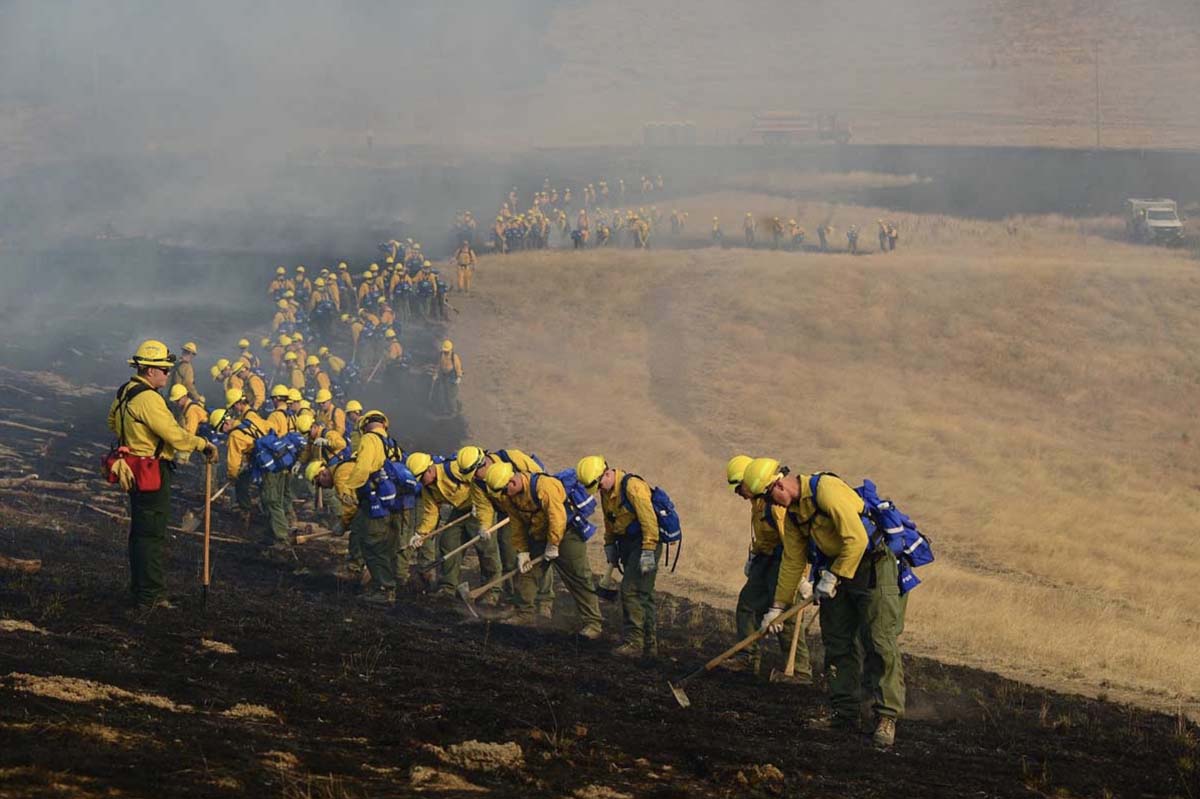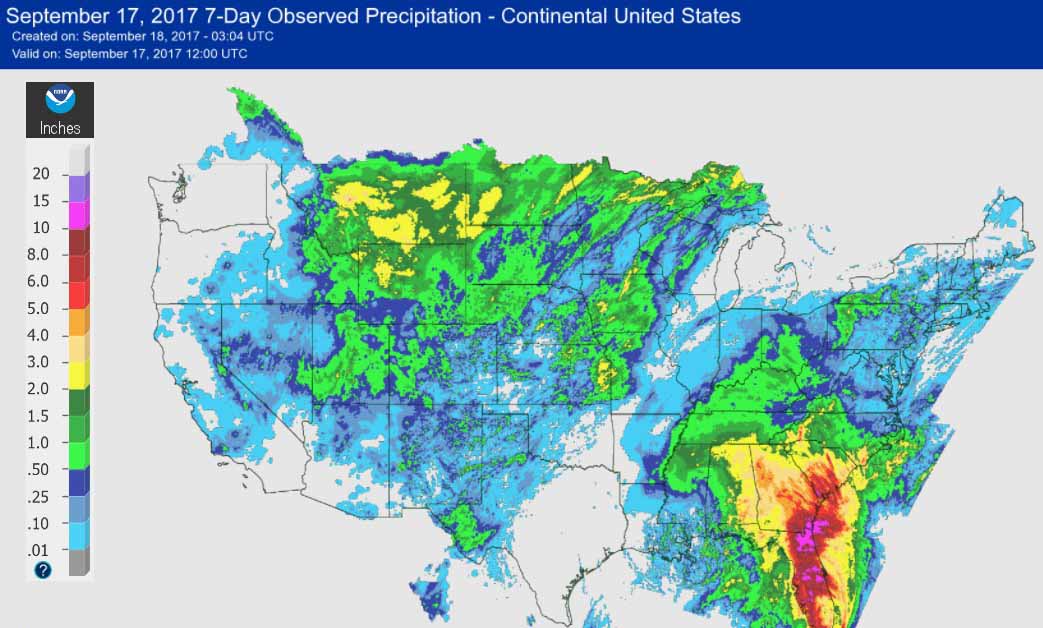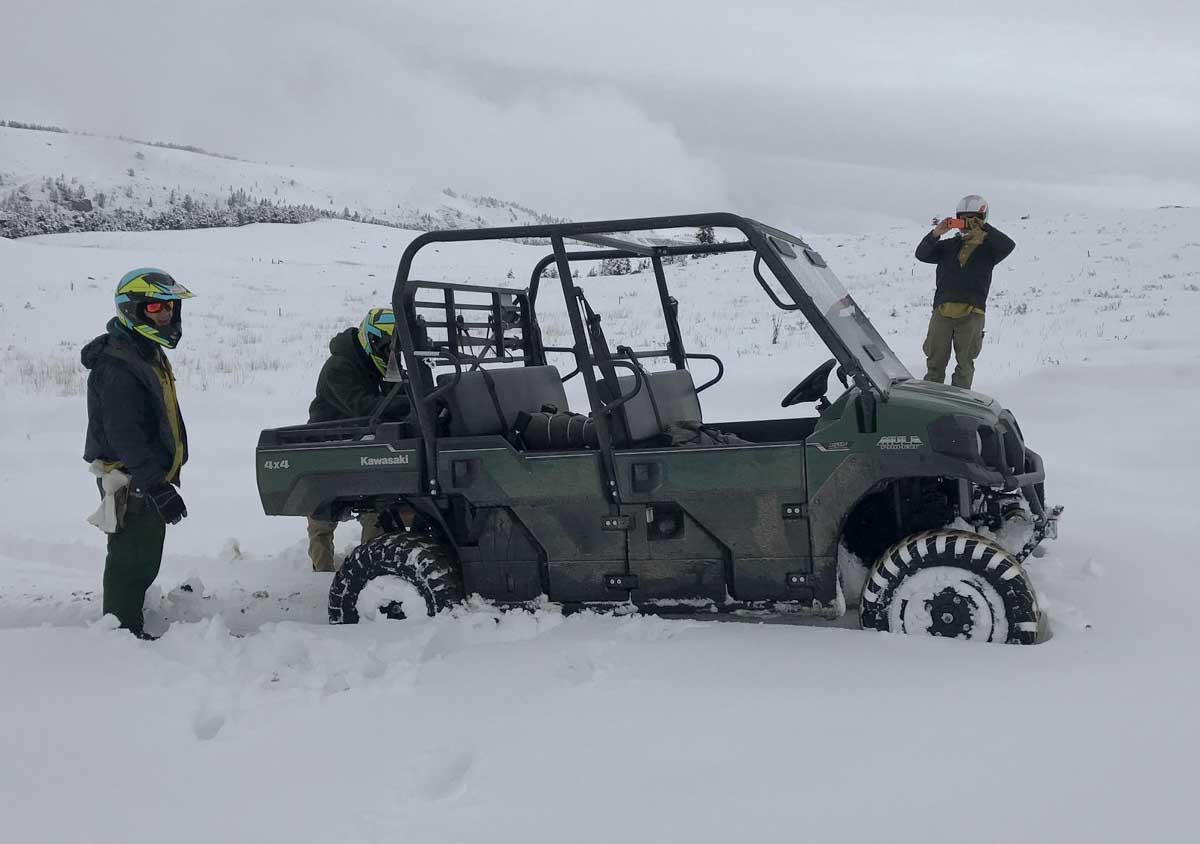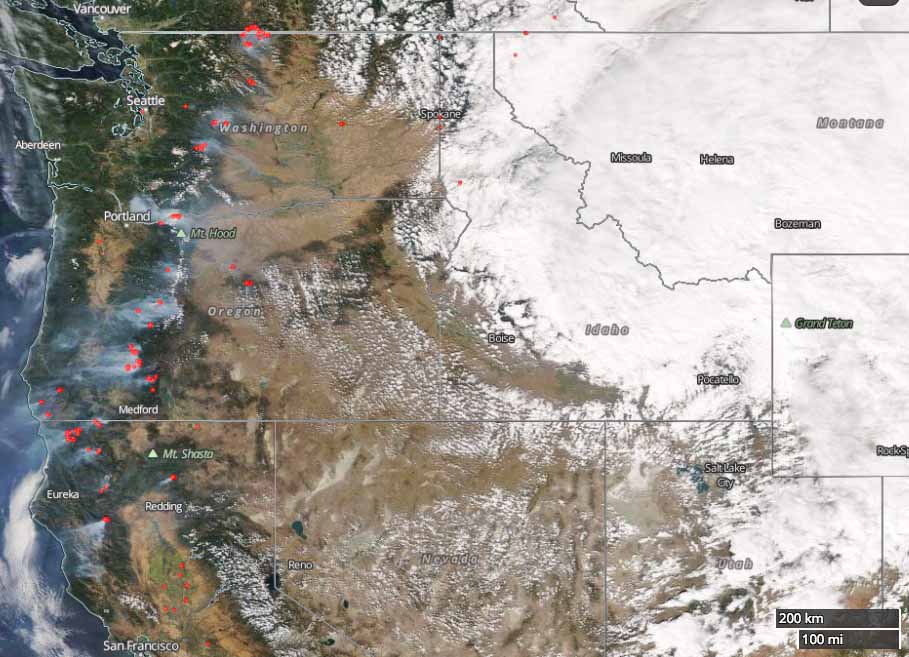Above: The Middle Fork Parker Creek bridge after the Parker 2 Fire moved through the area. (USDA photo by Chris Bielecki)
(Originally published at 1:50 p.m. MDT September 21, 2017)
(From the U.S. Forest Service)
As a wildfire rages across a forest, fire engines and heavy equipment travel swiftly along forest roads to get to the fire line. They arrive at the main bridge they need to cross, only to find it has burned and is impassible. This is not part of a storyline in a movie, it was reality for firefighters assigned to the Parker 2 Fire 10 miles east of Alturas, California on the Modoc National Forest (MNF) in August 2017.
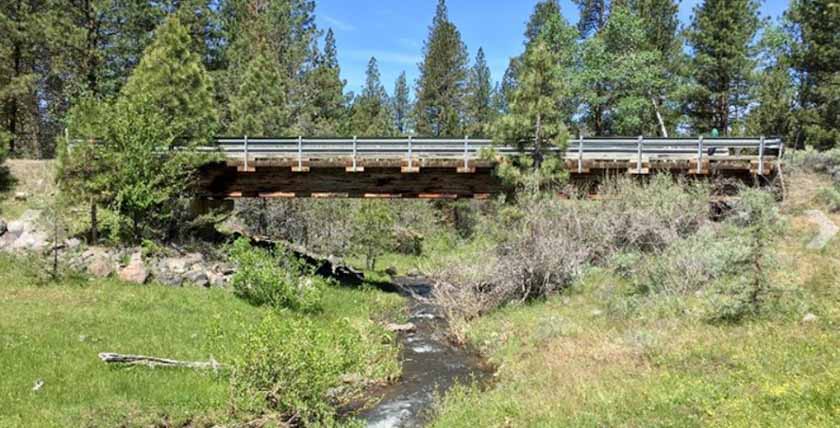
When firefighters discovered the burned bridge in the Warner Mountains, they reported it to the Incident Management Team (IMT). Heather McRae, working as the Operations Section Chief Trainee on the IMT, remembered that there was an unused bridge being stored at the Ashe Creek Guard Station on the nearby Shasta-Trinity National Forest (SHF). When she isn’t working on fires, Heather works as the Prescribed Fire and Fuels Specialist on the SHF. Heather quickly relayed to the MDF about the possible replacement bridge.
Upon hearing about the unused bridge, MDF Roads Engineer, Alvin Sarmiento, coordinated with SHF Engineer, Virginia Jones, to investigate if the bridge would fit the span needed. Shortly thereafter, MNF was sending their construction and maintenance crew over to load the bridge and transport it to the Warner Mountains.

Understanding the urgent need for the bridge to be in place to help firefighters battle the Parker 2 Fire, the IMT prioritized the resources needed to move it into place. From the time construction actually began, to the time the bridge was crossed by the first firefighters, only five days had passed.
“This was an incredible team effort. We tapped into the power of the IMT ordering and buying team, supply specialists and ground support for picking up and delivering parts, the operations section for providing invaluable contract equipment and operators, and our local road crew,” said Chris Bielecki, Forest Engineer on the MDF. “And it still amazes me that the bridge was available in the first place, and that it was the right size. This experience was definitely a career highlight for me.”
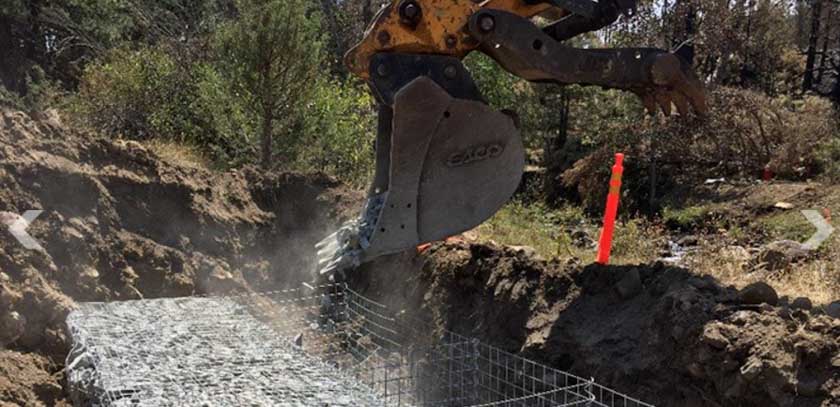
While sharing resources among national forests isn’t something new to the Forest Service, the sharing and placement of physical structures like this bridge in the middle of an emergency is unique.
“When it comes to fighting fire or responding to other emergencies, if we can help another forest in their time of need, we will do it every time,” said Dave Myers, Forest Supervisor for the SHF.
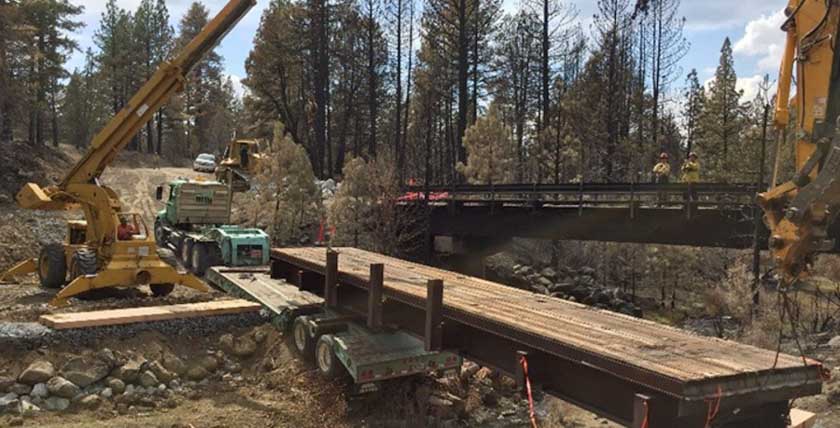
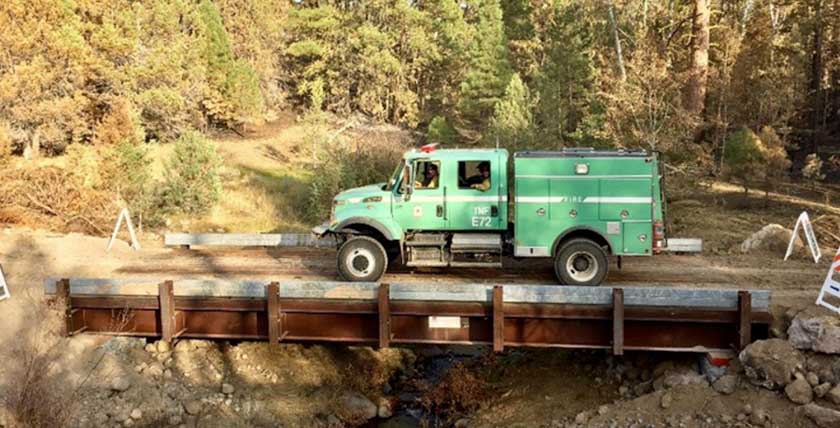
The Parker 2 Fire was contained at 7,697 acres.





